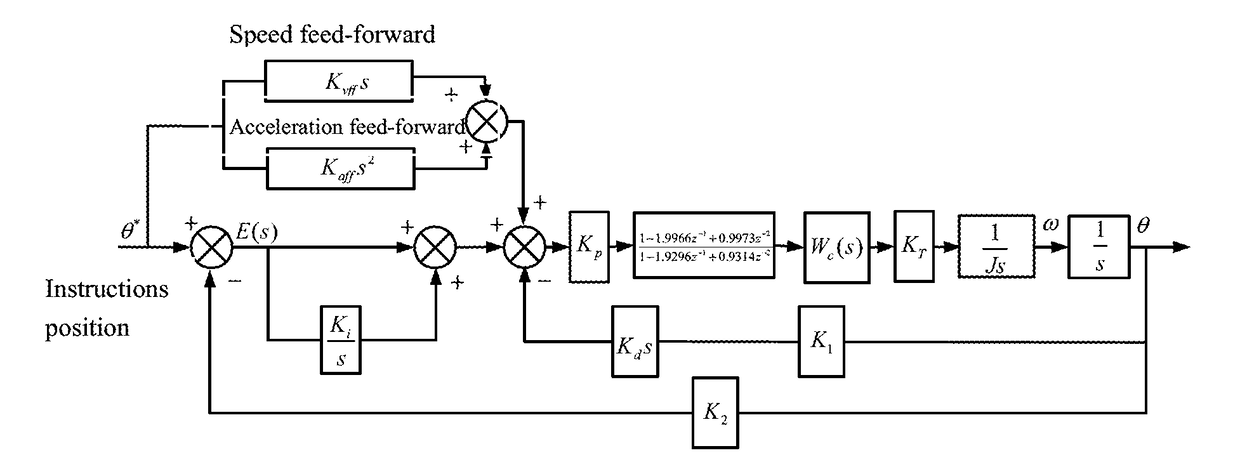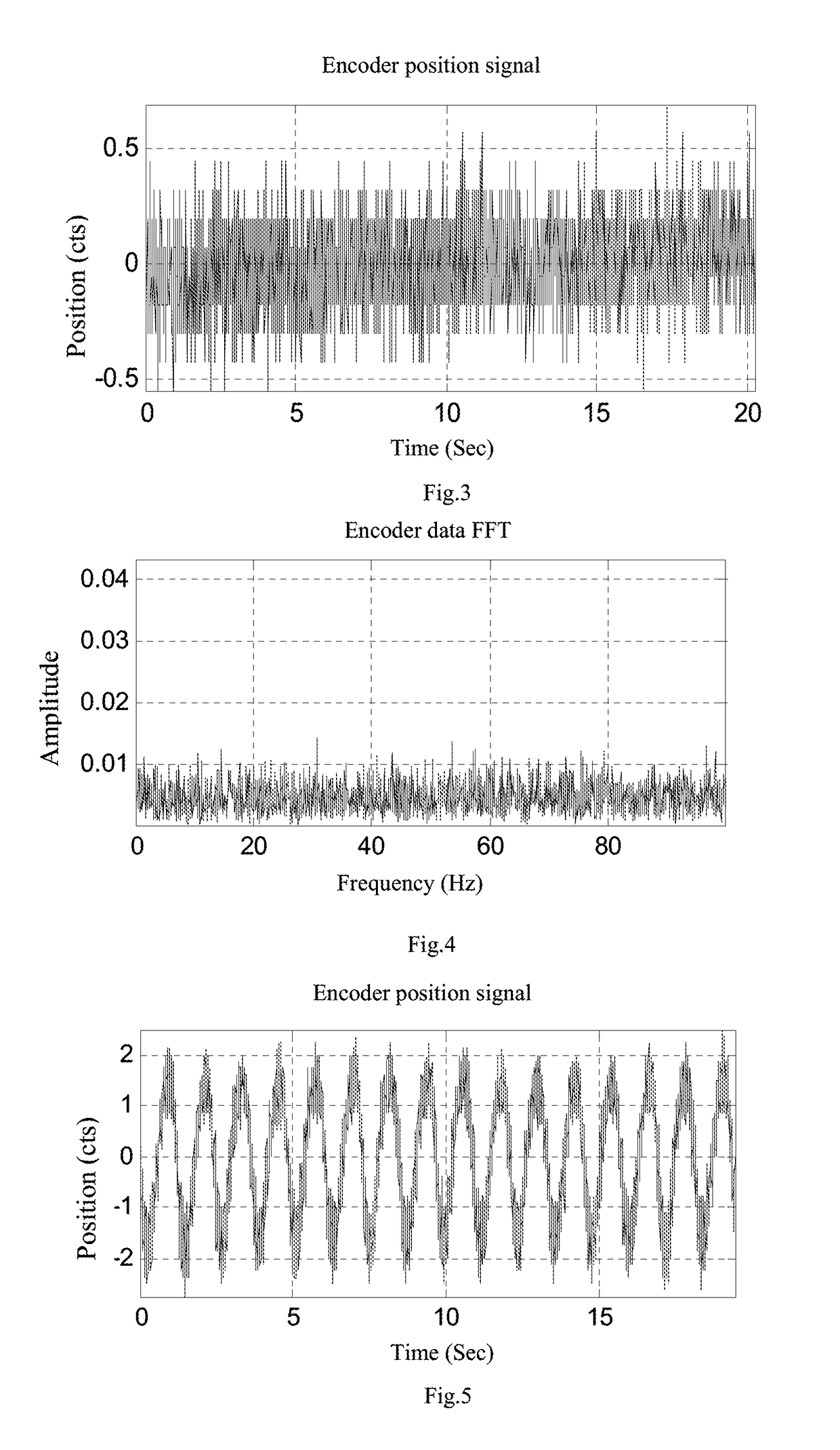Large-caliber telescope non-linear interference detecting and filtering method
a large-caliber telescope and filtering method technology, applied in the field of interference detection and filtering for the control system of an astronomical telescope, can solve the problems of reduced tracking precision, unstable tracking speed, hydrostatic vibration, etc., and achieve the effect of accurate filtering of interferen
- Summary
- Abstract
- Description
- Claims
- Application Information
AI Technical Summary
Benefits of technology
Problems solved by technology
Method used
Image
Examples
embodiment 1
[0043, Large-Caliber Telescope Non-Linear Interference Detecting and Filtering Method
[0044]In the following, embodiments of the invention are further described in conjunction with attached drawings and embodiment.
[0045]Two acceleration sensors are respectively set at the base of the telescope azimuth shaft and the gear oil diverter of the oil pad of a telescope with a caliber of 2.5 m. The signal of the accelerometer is input into the UMAC movement controller via the AD control card ACC-28E+OPT-1, and fed into the industrial personal computer via the Ethernet bus. When the oil pad is turned off and the telescope is static, the signals of the two accelerometers are measured and the acceleration vs frequency curve is plotted, as shown in FIG. 1. When the oil pad is turned on and the telescope is static, the signals of the two accelerometers are measured and the speed vs frequency curve is plotted, as shown in FIG. 2. It can be found by comparing the curves in the two diagrams that, af...
PUM
 Login to View More
Login to View More Abstract
Description
Claims
Application Information
 Login to View More
Login to View More - R&D
- Intellectual Property
- Life Sciences
- Materials
- Tech Scout
- Unparalleled Data Quality
- Higher Quality Content
- 60% Fewer Hallucinations
Browse by: Latest US Patents, China's latest patents, Technical Efficacy Thesaurus, Application Domain, Technology Topic, Popular Technical Reports.
© 2025 PatSnap. All rights reserved.Legal|Privacy policy|Modern Slavery Act Transparency Statement|Sitemap|About US| Contact US: help@patsnap.com



